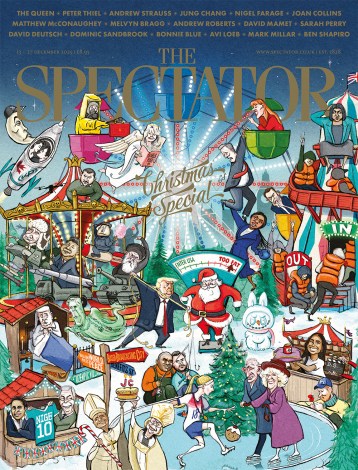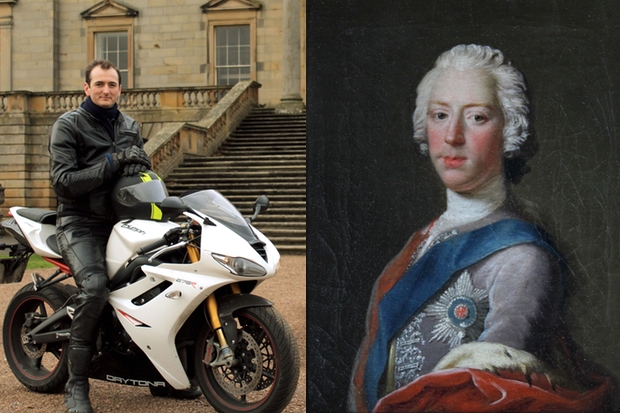What if Bonnie Prince Charlie, as he swept down from Scotland towards London to lay claim to the throne, hadn’t lost his nerve at Derbyshire but had instead pressed on — and won? What would Britain be like today? In the year that the Scots vote on whether to stay in the UK, the art world has discovered a painting from that other time when the union was in jeopardy. It’s a marvellous portrait of Charles, painted in Holyrood Palace by the famous Scottish artist Allan Ramsay, when both men were at the peak of their ambition. The only known portrait of Bonnie Prince Charlie from this heroic phase of his life, it dates from around 1745, when he led the Jacobite rebellion.
The discovery was made by the art detective Bendor Grosvenor, of Fake or Fortune fame. Grosvenor is English, but his stake in the endeavour was personal. He’d been suffering authenticator’s remorse since 2009, when he proved that a celebrated exhibit in the Scottish Portrait Gallery was not of Charles, as previously supposed, but instead of the Bonnie One’s brother Henry. Overnight, depictions of the portrait had to be pulled from the covers of countless shortbread tins. So Grosvenor, wanting to make good, set out to find an actual portrait of Charles Edward Stuart, and his mission was the subject of The Lost Portrait of Bonnie Prince Charlie, a Culture Show special on BBC2.
It’s a quietly stunning programme, documenting not only the unearthing of the lost portrait, but also a journey into the heart of Scotland. At first Grosvenor circled the fringes of art collections, fingering a posthumous miniature of Charles here, studying a florid modern depiction there. He was helped by the camera. At the beginning it showed scenes of men in kilts and playing bagpipes — not a fake Scotland, to be sure, but still the Scotland the world most readily recognises; then, as Grosvenor closed in on the real deal, it offered more poetic, intimate shots of the Scottish landscape. By the time Grosvenor rode up in leathers on his motorcycle to Edinburgh, to show his find to a Ramsay expert, the screen was awash with golden Scottish sunlight. As we clapped eyes on the portrait of the Young Pretender himself, there seemed more layers to uncover: he was really bonny, this prince, with his glamorous sheen, bright eyes and pink cheeks (revolting must do wonders for your complexion).
Equally charming was the pilot of the fifth season of BBC1’s Jonathan Creek, which saw the frizzy-haired detective, played by funnyman Alan Davies, reluctantly drawn into the tawdry world of second-tier musical theatre. Yes, the two concurrent cases that Creek had to solve, with the help of his wife Polly (Sarah Alexander), weren’t exactly in the save-the-world league — but that’s precisely what endears Creek to his cult following. He makes everything look shambolic until the very end. Indeed, the episode poked fun at super-sleuths, with a Sherlock-type character (though in appearance he more resembled Doctor Who’s David Tennant) who kept spotting ‘clues’ and spouting theories à la Cumberbatch — except his theories were always wrong.
The show teased out the comedy in tragedy very well, with the death of Polly’s father handled with both tenderness and humour. (‘Oh, why is it so hard?’ Polly sobbed as she looked at her deceased father in his coffin, while clutching the corpse’s hand. ‘Rigor mortis, I think you’ll find,’ replied the undertaker.) My one gripe is that the howdunnit element pertaining to the musical, whose leading starlet died from blood loss, was revealed to the viewer from the get-go: Creek’s deduction skills were only used for part of the mystery. Still, this is a detective series that doesn’t take itself too seriously — and goodness knows we need one.
Something’s sprung up at BBC3 called Hair. Six contestants (or was it five? I may have suppressed the memory) compete at washing, cutting, styling, blow-drying and stacking up hair. For their first challenge, they had to create a quiff at least seven centimetres high. This they did on models whose expressions varied from amused to agonised. By the third challenge, when the contestants had to create styles along a ‘fairy-tale’ theme, a few models looked positively mutinous. I may be wrong, but the one on whose head was piled a huge, heavy mass, meant to represent a giant flower bud, seemed to glower angrily from underneath it. When the ‘petals’ were untied and a Thumbelina popped out from atop her cranium, she looked unhappier still.
It may yet work, but so far the show doesn’t quite gel. The two judges aren’t compelling, and the male one wears a hat indoors, which doesn’t inspire confidence. Perhaps Hair should have been left on the cutting-room floor.






Comments